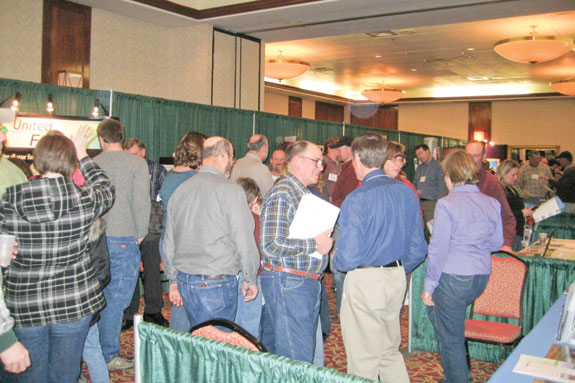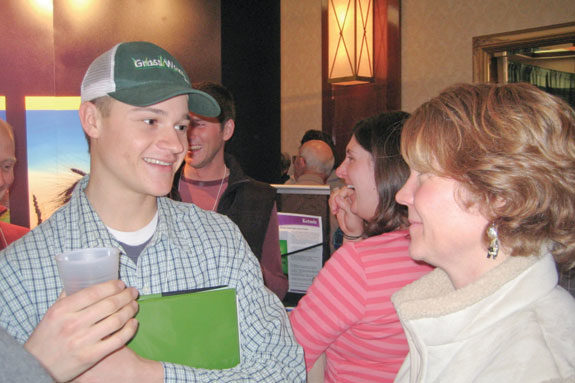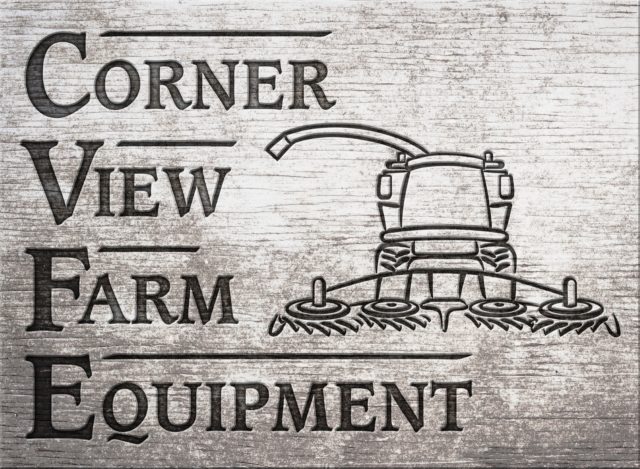The conference, which is organized by GrassWorks, Inc., offered a diversity of grazing and farming-related sessions.
Over the two-and-a-half days, three keynote speakers and 24 breakout sessions served to educate the new, veteran, and aspiring grazier, and to inspire those who were receptive.
In the trade show, more than 40 vendors talked with participants, providing valuable information on grazing-related products and services.
The Grazing Conference focuses on “managed grazing,” a sustainable farming method in which livestock are rotated through paddocks of high-quality grasses and legumes that are then allowed to rest and re-grow. Many sessions at this year’s conference were attractive to the dairy producer.
A farmer could attend one-and-a-half-hour sessions on grazing methodology, new small-scale irrigation systems for managed pastures, supplemental feeding, pasture management, nutrient management on pasture, and/or genetics for the grazing dairy herd.
There were ample opportunities to learn for the producer who has ever wondered: What plants should be in my managed pasture? Can I graze Holsteins? How should supplements be fed? Can you really feed no grain? How do you manage manure when the animal is spreading it?
One session addressed the issue of “out-wintering” a dairy herd. In out-wintering systems, animals are allowed continuous access to the outdoors during the winter period.
They are provided a bedding pack and permanent or portable windbreaks. An out-wintering experience that is successful for the farmer and the animals requires: a non-winter calving window, delayed calf weaning to promote advanced growth and development, high-quality forages for all animal groups, appropriate windbreaks, and breeding for hardy animals that can tolerate the winter conditions.

There were also sessions that described the necessary infrastructure for integrating managed grazing into a dairy operation. New grazing operations need fencing, durable lanes to keep animals out of muddy conditions, water lines to transport water to animals on managed pasture, and a comprehensive grazing plan (written by a regional grazing specialist) that includes the aforementioned components, along with pasture seeding recommendations.
These essential nuts and bolts of a grazing operation will get the new dairy grazier off to a good start.
However, there were also opportunities for beef, sheep, goat, pig, and poultry producers to learn and share their stories about how grazing and using managed pastures works, and can work for their established or new system.
Managed grazing is appealing for those interested in an agrarian life, young or old. The initial benefits offer reduced start-up capital, reduced feeding and fuel costs, and unique but attractive labor requirements. These are the attributes of managed grazing the grazing community is disseminating to the young aspiring farmer or the veteran farmer looking for a new model to practice.
Grazing is a great way for new farmers to get started. According to GrassWorks Inc. Executive Director Valarie Dantoin-Adamski, “Managed grazing is a low-input and cost-effective management tool that’s a key predictor of success for start-up dairies.”
At the conference, new farmers were welcomed with generosity and enthusiasm. Students from the School for Beginning Dairy and Livestock Farmers were each paired with a mentor farmer who could show them the ropes. In this way, interested young farmers were introduced to the grazing community and to potential career opportunities in grazing.
The conference also had three speakers that provided keynote addresses. They used their opportunity at the podium to reflect upon the relationship between the economy and agriculture.
The three offered words of inspiration, suggesting that, regardless of the condition of the economy, if graziers work hard, use some historical wisdom combined with ingenuity, and continue to improve, farmers can operate financially and ecologically successful and sustainable businesses and provide quality food for consumers.
Jim Van Der Pol, a pastured pork producer from Pastures A Plenty Farm in Kerkhoven, MN, and regular contributor to Graze Magazine, emphasized how agriculture has changed over the decades.
He suggested that farmers will need to be flexible in order to respond to volatility, not only in the agricultural economy, but in other aspects of the world.
For Van Der Pol there is value in accessing the wisdom from past farming practices. He adds that farmers can select and implement these practices in contemporary agriculture.
Andy Hager, former UW Extension ag agent and current Holistic Management educator, reminded conference attendees that grazing-based farming systems can make meaningful contributions to agriculture.
An agriculture agent and educator who has witnessed the evolution of grazing, Hager believes that while managed grazing has accomplished much, there is much more to be done.
Woody Tasch, author of Inquiries into the Nature of Slow Money: Investing as if Food, Farming and Fertility Mattered, is facilitating a campaign to get one million Americans to invest 1% of their assets in local food systems. Tasch argues that if Americans collaborate, a “nurture capital industry” can be created that enhances food security, improves nutrition and health, and promotes cultural, ecological, and economic diversity.
GrassWorks invites farmers and non-farmers to attend in order to learn more about grazing. If you are considering integrating managed grazing into your operation or are thinking about starting a farm with a grazing emphasis, consider attending the 2011 Wisconsin Grazing Conference.
You will leave with valuable knowledge and a significant amount of inspiration to get you started. GrassWorks is a statewide, producer-run, non-profit organization that provides information and resources on managed grazing. To learn more about GrassWorks, past and future grazing conferences and other grazing-related events or to find a grazing specialist. FG
Brian Nischke completed the Farm and Industry Short Course and the School for Beginning Dairy and Livestock Farmers in 2009 with an emphasis in grazing dairy farm management. He is currently an employee on an 80-cow grazing dairy in central Wisconsin.
PHOTOS:
PHOTO 1: Andy Jaworski, a graduate of the Wisconsin School for Beginning Dairy and Livestock Farmers, catches up with Jennifer Taylor, the school’s Assistant Director.
PHOTO 2: Attendees check out the booths at the 18th annual Wisconsin Grazing Conference. Photos courtesy of GrassWorks, Inc.









